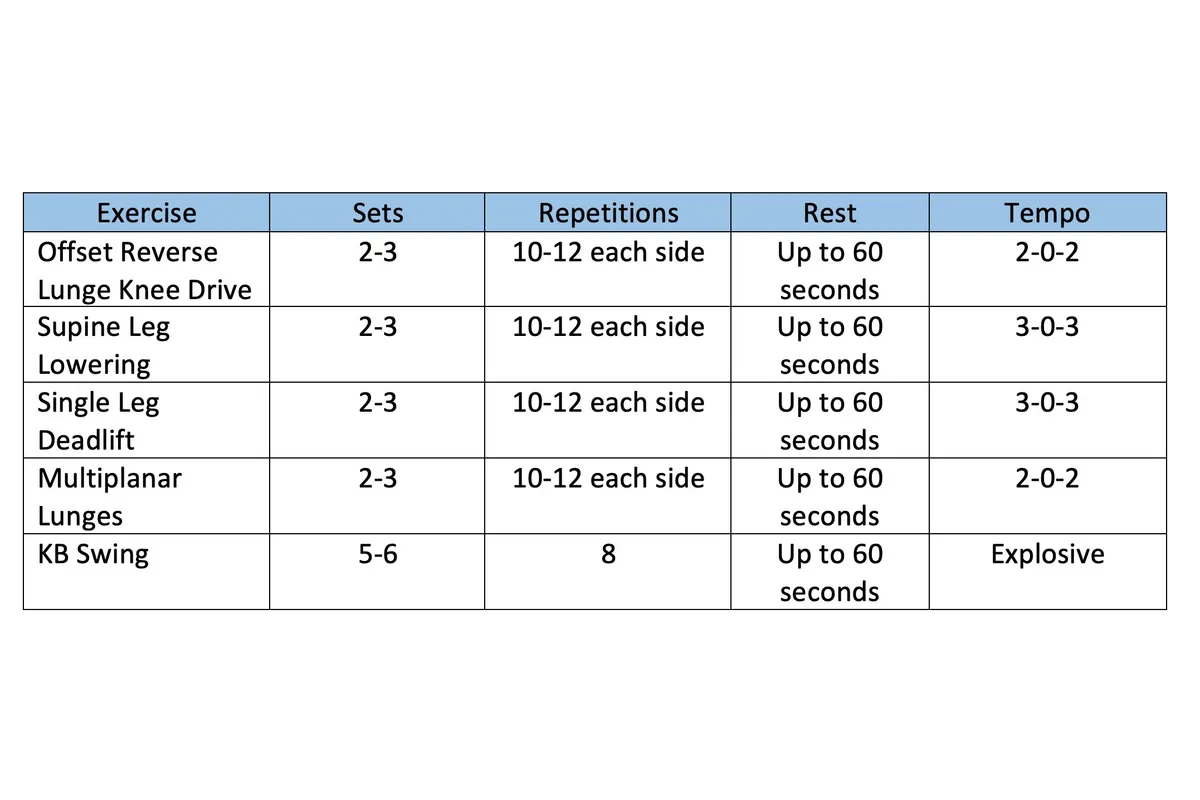When looking for ways to improve your muscular endurance, speed and running efficiency, it’s generally accepted that you need to incorporate strength training into your weekly training plan. In particular, developing the ability to express force many times over is key if you want to run faster.
When it comes to strength training, loading up movements with weights over time is a tried and tested method of progressively overloading the body to generate strength adaptation.
With this in mind, this article is will explore how you can use just one piece of kit - the kettlebell - to make progress in strength, stability and power to enhance your running ability as a starting point.
These kettlebell exercises take into account the key joint actions that occur during the running gait (Running biomechanics: The different stages of your run stride)
- Ankle dorsiflexion and plantar flexion
- Knee flexion and extension
- Hip flexion and extension
We’ll also focus on developing strength in the abdominals to help with a tall, upright posture when running.
Offset Reverse Lunge Knee Drive
Loading up the kettlebell on one side of the body is a really good way of testing out your core stability and balance in the reverse lunge knee drive. The goal here is to stay upright and not let the kettlebell pull you over to one side. This requires the muscles of the core to work hard in stabilising the spine and also a lot of hip and quadricep strength to keep your knee from rolling inwards. The knee drive can be seen as an addition to the reverse lunge that makes this more challenging from a balance perspective.
Goblet Multi-Planar Lunges
Whether you run on or off-road it’s important to develop strength in the three main planes of motion, those being Sagittal (forwards and backwards), Frontal (side to side) and Transverse (rotational). The multiplanar lunge takes all of those planes of motion into account, helping to challenge your body to develop strength when force is being transferred in each direction. This is a brilliant way of working on your hip mobility too, which is shown to reduce risk of developing knee injuries.
Kettlebell Single-leg Deadlift
Single leg deadlifts require you to be stable on one leg whilst also generating strength in the glutes, hamstrings and lower back. The hip hinge movement is good for developing hip flexion and extension, which both play a key role in running mechanics.
Supine Leg Lowering with kettlebell
The ability of your abdominals to stabilise your spine and pelvis when running is a key part of being able to hold good posture and create efficient mechanics to develop a strong running pattern. This move uses the Kettlebell to lock your shoulders and upper body down, whilst you focus your attention on slowly lowering one leg at a time towards the floor. The goal is to brace your abdominals to keep your spine in a neutral position (no movement up or down) throughout.
Kettlebell Swing
The Kettlebell swing is a great movement that will help to create more explosiveness in the hip extension portion of the running gait. This move requires your glutes and hamstrings to be strong and powerful and your core stabilising muscles to do their job of supporting the spine.
As this is a power-based movement, it’s best to dial in your focus on movement quality over quantity…that means a repetition range of 6-8 at the top end with explosive power on each rep, then recovery with the goal of going progressively heavier in weight.
How to train with a kettlebell
As strength endurance is a key attribute for triathlon, it makes sense to build your kettlebell training into a programme that helps to develop this particular attribute. This is what a running-based kettlebell workout with these key exercises might look like…

Start by completing two sets of 10 repetitions on the first four exercises, then over time build up to two sets of 12 repetitions. Your next progression is to complete three sets of 10 repetitions, then build to three sets of 12 repetitions. Then once this is too easy, increase your weight.
The tempo refers to the number of seconds you lower into each movement (two or three seconds) before driving back up for the same number of seconds, with no pause in between.
For example, on the reverse lunge knee drive - step back and lower your back knee down towards the ground for two seconds, then without any pause at the bottom of the movement, drive back up into a knee drive at a two second tempo.
Top image: Getty Images
